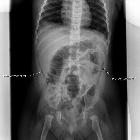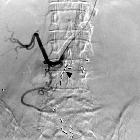Freie abdominelle Luft

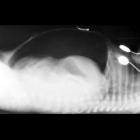



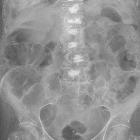



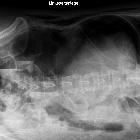


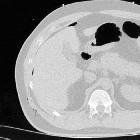





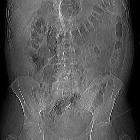













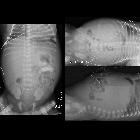








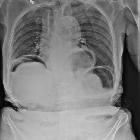

















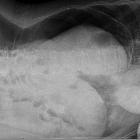

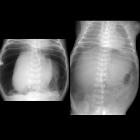


Subdiaphragmatic free gas is one of the ways of detecting presence of free intraperitoneal gas (i.e. pneumoperitoneum). It is the presence of free, extraluminal gas in the anterior subhepatic space.
Radiographic features
Plain radiograph
Subdiaphragmatic free gas is well appreciated as the gas under the diaphragm and air in the lungs outline the diaphragmatic contour well.
As little as 1 mL of free gas can be detected but the patient may be needed to be kept in upright position for about 10 minutes for the gas to rise.
Erect chest x-rays covering the upper abdomen are often considered the best for detecting free subdiaphragmatic gas but an erect abdominal x-ray covering the lung bases will be just as sensitive.
When there is a large amount of free subphrenic gas the continuous diaphragm sign may be present.
Differential diagnosis
- Chilaiditi sign/syndrome
- subdiaphragmatic abscess
- omental fat interposed between the liver and diaphragm
- subpulmonary pneumoperitoneum
- enlarged gastric bubble
- gas-containing liver hematoma
See also
Siehe auch:
- Pneumothorax
- Linksseitenlage
- Rigler-Zeichen
- Mesenterialinfarkt
- Divertikulitis
- Mediastinalemphysem
- Nekrotisierende Enterokolitis
- Fremdkörper
- mechanischer Ileus
- Pseudopneumoperitoneum
- Chronisch-entzündliche Darmerkrankungen
- Magenulkus
- peritoneal cavity
- Appendizitis
- abnormales Gas im Abdomen
- Pneumoperitoneum beim Neugeborenen
- football sign
- tension pneumoperitoneum
- freie retroperitoneale Luft
- cupola sign
- properitonealer Fettstreifen
und weiter:
- Chilaiditisyndrom
- Magenperforation
- emphysematöse Cholezystitis
- continuous diaphragm sign
- falciform ligament sign
- Überblähung nach Endoskopie
- necrotising enterocolitis staging
- post-operative pneumoperitoneum
- Pneumatosis intestinalis bei immunsupprimierten Patienten
- Barotrauma der Lunge
- Dünndarmverletzung
- traumatische Jejunumperforation
- freies intraperitoneales Fett
- benignes posttraumatisches Pseudopneumoperitoneum
- Fußballzeichen (Pneumoperitoneum)
- Riesenpseudodivertikel des Kolons

 Assoziationen und Differentialdiagnosen zu Pneumoperitoneum:
Assoziationen und Differentialdiagnosen zu Pneumoperitoneum: nicht verwechseln mit:
nicht verwechseln mit: 

